Tehran Museum of Contemporary Art
Museums are the gatekeepers of our ancestral heritage, granting us a glimpse into the lives of those who came before us. And in the vibrant city of Tehran, exceptional museums await to captivate the souls of art enthusiasts.
Among these gems, the Tehran Museum of Contemporary Art is a beacon beckoning fervent art lovers to immerse themselves in a sanctuary of creativity and some fantastic artworks.
The Tehran Museum of Contemporary Art is nestled on the eastern side of Laleh Park, and this architectural marvel houses over 3,000 priceless masterpieces from renowned painters, including Picasso, Henri Matisse, Vincent Van Gogh, Miró, Dalí, Bacon, Pollock, Monet, Munch, Moore and Warhol. Join us as we explore what makes this Museum a haven for art enthusiasts.
About the Tehran Museum of Contemporary Art
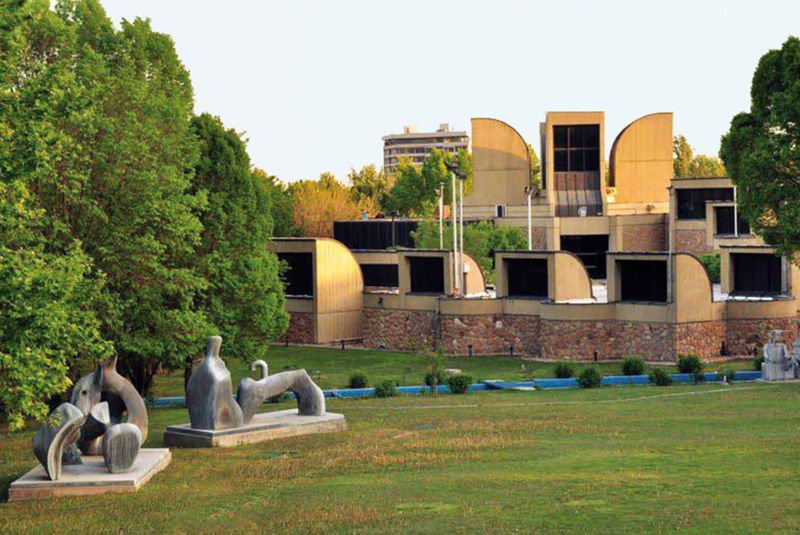
Iran's history, in general, is linked with art, and the new era will undoubtedly need contemporary art. Hence, the Tehran Museum of Contemporary Art gathers masterpieces from great international artists and works of art from Iranian artists.
Tehran's contemporary art museum location is on the east side of Laleh Park. It houses an impressive collection of 3000 items from the 19th and 20th centuries, showcasing the best of European and American modern art. In fact, it is ranked among the top ten most valuable modern art collections worldwide, making it far from ordinary.
At the Tehran Museum of Contemporary Art, you will be enchanted by the works of renowned modern art leaders such as Picasso, Gauguin, Henri Matisse, Vincent Van Gogh, Miró, Dalí, Bacon, Monet, Munch, Moore, Warhol, Renoir, and Pollock, which experts estimate to be worth an astounding £2.5 billion. Additionally, a selection of contemporary Iranian artists, such as Sohrab Sepehri and Parviz Tanavoli, is displayed in the Museum. The Museum also hosts temporary exhibitions, primarily featuring the works of young, talented Iranian artists.
The Museum was established by Empress Farah Pahlavi in 1977, two years before the 1979 Revolution in Iran. The idea arose when she talked to an artist named Darroudi during a gallery opening.
| Dicover: National Jewelry Museum of Iran
History of Tehran Museum of Contemporary Art
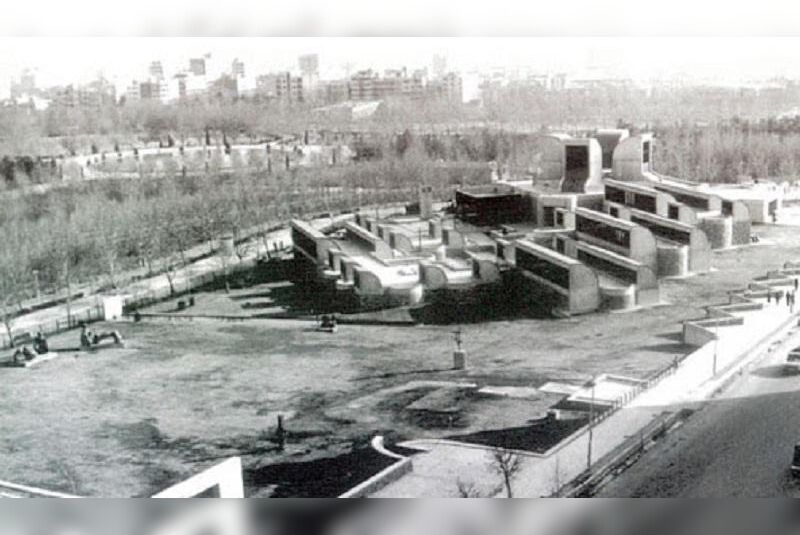
The Tehran Museum of Contemporary Art has an interesting history. It all started when Farah Pahlavi, the former Empress of Iran, had a conversation with artist Iran Darroudi during a gallery opening in the 1970s. Darroudi expressed her desire for a permanent space to exhibit art, and this conversation led to the establishment of the Tehran Museum of Contemporary Art to exhibit contemporary and modern Iranian artists alongside international artists working in similar styles.
The Museum was designed by Kamran Diba, an Iranian architect who is also a cousin of the queen. Its construction was completed in 1977, and the building itself can be considered a work of contemporary art. Its underground structure resembles the iconic spiral walkway of the Guggenheim Museum in New York, with galleries branching outwards. Most of the Museum's space is underground, with a circular walkway that spirals downwards and galleries branching outwards.
The Museum's gardens feature Western sculptures by renowned artists such as Ernst, Giacometti, Magritte, and Moore. The selection of artwork for the Museum was done under the supervision of Farah Pahlavi, and the budget was provided by the National Iranian Oil Company. Pahlavi personally met many of the artists whose work became part of the Museum's collection, including Western artists like Marc Chagall, Salvador Dali, Henry Moore, Paul Jenkins, and Arnaldo Pomodoro. The selection process involved individuals such as Donna Stein and David Galloway, both Americans, Kamran Diba, the Museum's architect and director, and Karimpasha Bahadori, who served as the chief of staff of the cabinet.
Following the Iranian Revolution in 1979, the Western art collection was stored away in the Museum's vault. It wasn't until 1999 that the first post-revolution exhibition of Western art was held, showcasing artists like Hockney, Lichtenstein, Rauschenberg, and Andy Warhol. Currently, only a few pieces from the Western art collection are shown for a few weeks each year, as the conservative nature of the Iranian establishment limits their display.
The Tehran Museum of Contemporary Art is considered to have one of the most valuable collections of Western modern art outside of Europe and the United States. The artworks held in the Museum are estimated to be worth approximately £2.5 billion. The Museum regularly hosts exhibitions and also organizes shows featuring local artists, offering a dynamic and diverse program for art enthusiasts.
| Read more: National Museum of Iran
Architecture of the Tehran Museum of Contemporary Art
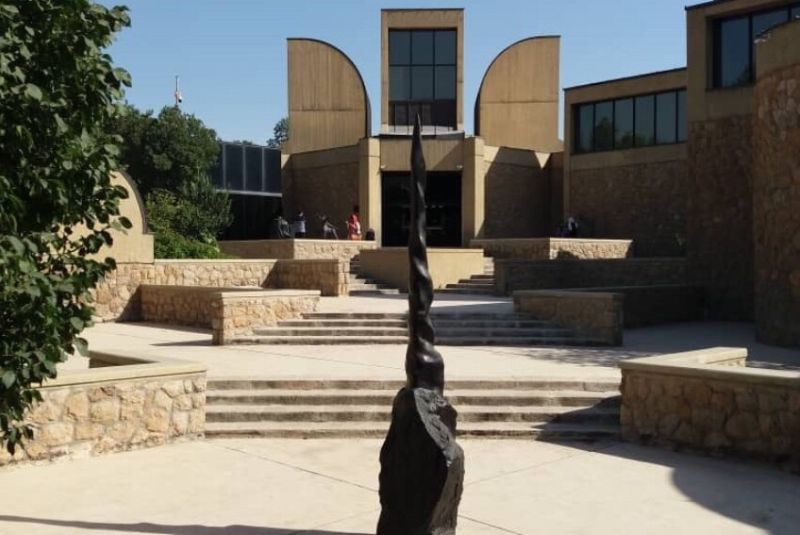
When you enter the Tehran Museum of Contemporary Art, you'll be captivated by its intriguing architecture. The building embodies a sense of mystery and uniqueness. While it appears modern and yet rooted in tradition from the outside, the interior offers a completely different experience.
The Museum was designed in 1977 by Kamran Diba, an Iranian architect, and it took nine years to complete the Museum. The Museum has various sections including a library, café, sculpture garden, exhibition hall, and administrative area.
The Museum spans an impressive area of approximately 8,500 square meters. Out of this, around 5,000 square meters are dedicated to galleries and administrative departments. The main entrance to the Museum of Contemporary Art is located on Kargar Street. Notably, the exterior design of the Museum draws inspiration from the wind-catchers found in the Iranian desert, giving it a distinct visual appeal. The main building of the Museum is positioned to the south, while the sculpture garden adds charm to the surrounding neighborhood.
When it comes to the circulation within the Museum's architecture, it refers to the accessibility and connectivity between different parts of the building. In the case of the Tehran Museum of Contemporary Art, circulation has been thoughtfully considered, making it an impressive example of architectural art. The design seamlessly guides visitors from the entrance to various sections, eliminating the need to search for different areas. The main building consists of two main sections, several subdivisions, and a central courtyard. The interior path follows a spiral pattern with a gentle downward slope, connecting visitors to the seven galleries within the Museum.
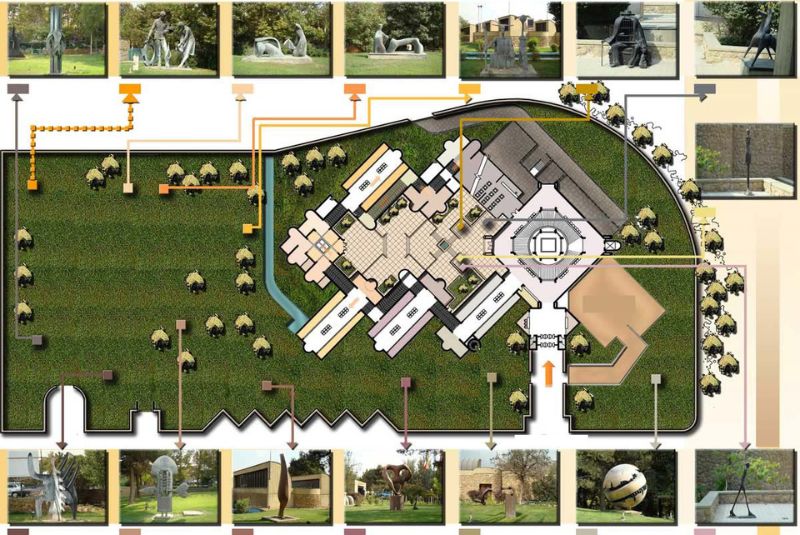
As visitors enter the main part of the Museum, they gradually descend and move between galleries. While the main galleries share similarities, galleries 1 and 5 have unique design elements setting them apart from the others.
The photo gallery of the Tehran Museum of Contemporary Art features a hallway designed in a modern-traditional style. This section showcases octagonal architecture reminiscent of ancient Iranian design principles. Above the hallway, a large roof resembling desert wind catchers adds a captivating touch. The hall serves as a central space connecting the entrance, galleries, library, and restaurant. At the end of the Museum's labyrinth-like path lies an artwork by the renowned Japanese artist Noriyuki Haragochi. Interestingly, this piece was created in Iran and bears resemblance to traditional Iranian ponds, adding to the cultural fusion within the Museum.
Overall, the Tehran Museum of Contemporary Art offers a harmonious blend of modern design and traditional elements, providing visitors with an immersive artistic experience.
| Learn about: Tehran Music Museum
Museum of Contemporary Art Library
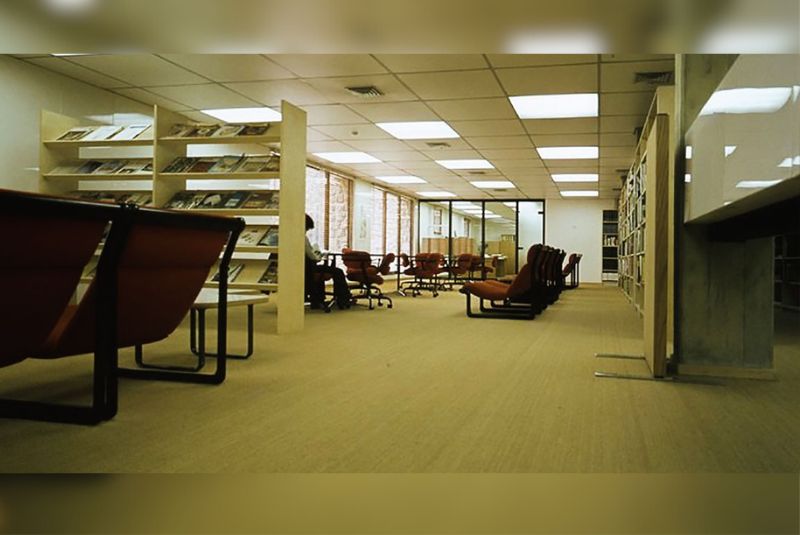
In addition to the Museum's extensive collection of over 3,000 valuable and unique works from renowned artists of Iran and around the world, it also houses a specialized library.
The library is situated at the end of the path leading to the administrative and artistic departments, and it offers a diverse selection of approximately 5,000 books in both Persian and non-Persian languages. These books cover a wide range of artistic topics, including architecture, painting, drawing, visual communication, photography, cinema, and more.
The library follows the Congress (LC) classification system and is exclusively accessible to its members. Membership in this esteemed library is granted to students and researchers dedicated to the field of art.
What to Do in Tehran Museum of Contemporary Art
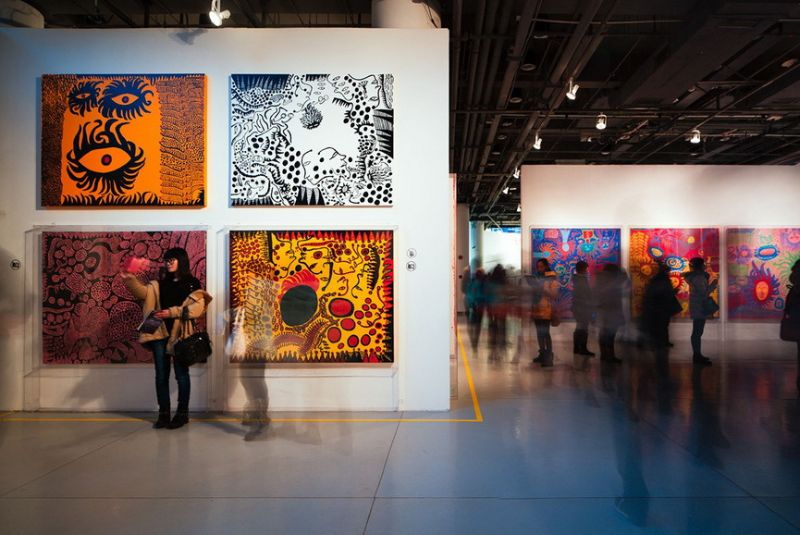
The museum offers so many things to do besides exploring the artworks and its captivating galleries. Here, you can immerse yourself in the world of Western sculptures created by renowned artists like Ernst, Giacometti, Magritte, and Moore in its garden. These thought-provoking sculptures are thoughtfully placed throughout the museum yard and garden, creating an intriguing and somewhat unconventional arrangement.
The garden also provides a serene and contemplative atmosphere for walking while you appreciate the harmonious blend of nature and art. You can also visit the library at the museum to learn about art and famous artists.
| Suggestion: The Water Museum in Yazd
Tehran Museum of Contemporary Art Location
The Tehran Museum of Contemporary Art is conveniently situated on the western side of Laleh Park, within the Amir Abad neighborhood in Tehran. The museum entrance is specifically located on the northern section of Karegar Street. Accessing this Museum is hassle-free, thanks to the availability of public transportation options.
How to Get to the Tehran Museum of Contemporary Art
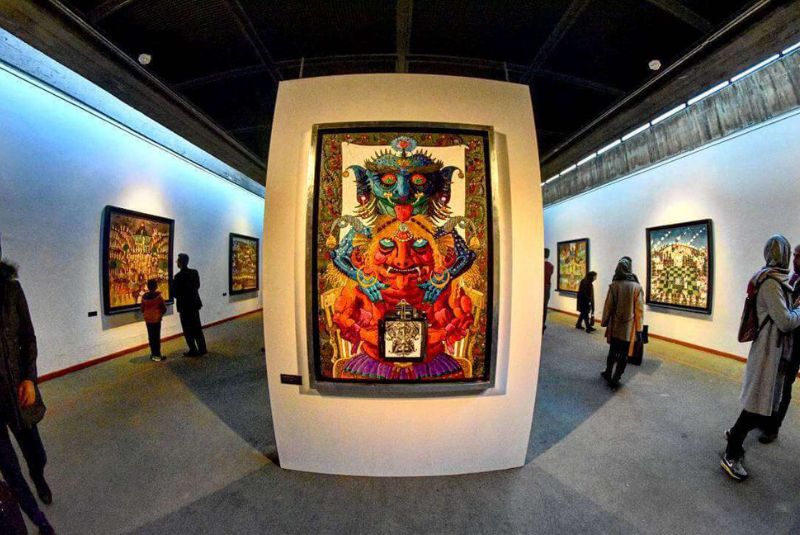
The Tehran Museum of Contemporary Art is conveniently located in the center of Tehran, making it easily accessible by various modes of transportation such as taxis, buses, and the metro.
- Metro: If you prefer to use the metro, you can take the sixth line, also known as the pink line, of the Tehran Subway and alight at the Karegar station. From there, it's a short walk to North Kargar Street, where you'll find the entrance to the Museum.
- Bus: For those opting for buses, you can take the buses that run from Haft-e Tir Square to Azadi Square or from Azadi Square to Vali Asr Square. These buses have a stop on the south side of Laleh Park. From the bus stop, you can easily walk to the Tehran Museum of Contemporary Art within a few minutes.
- Shared-Taxi: If you happen to be near Valiasr Square, Dr. Fatemi Square, Enqelab Square, or Haft-e-tir, you can take a shared-taxi that will bring you directly to Laleh Park. Once you arrive at Laleh Park, you'll be just a short distance away from the Museum.
Opening Hours
The Museum is open for visitors during the first half of the year from 10 am to 7 pm. In the second half of the year, the visiting hours are from 10 am to 6 pm.
Best Time to Visit

As the Museum is situated in an enclosed environment, it remains accessible throughout the year, offering a delightful experience regardless of the season. However, due to the Museum's location within Laleh Park, the spring and summer months are the best time to visit.
Tehran Museum of Contemporary Art Tickets
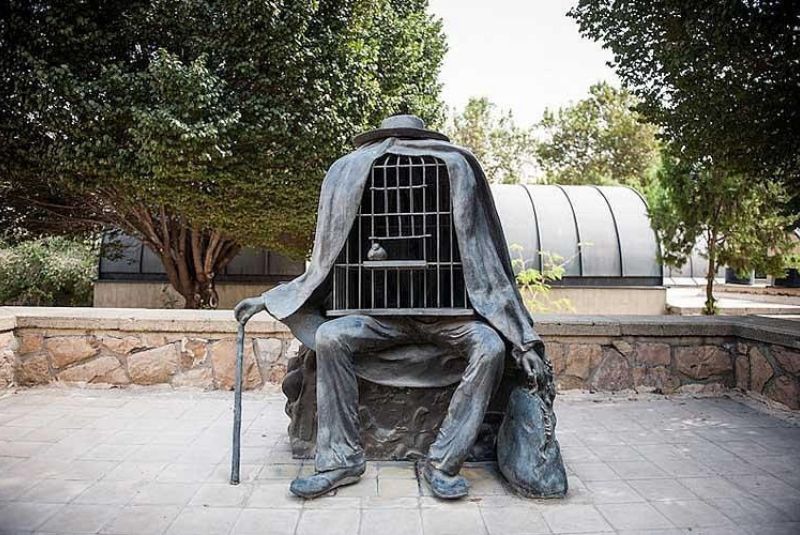
When visiting the Tehran Museum of Contemporary Art, it's important to be aware of the ticket price. The cost of entry to the Museum is 10,000 Tomans per person. It's necessary to purchase the ticket at the beginning of your visit. We recommend keeping the ticket with you throughout the duration of your visit, as the guards may request to see it during your time in the Museum.
Note that during the first half of the year, the ticket sales end at 6 pm and in the second half of the year, the ticket sales end at 5 pm.
Attractions Nearby

While visiting the Tehran Museum of Contemporary Art in the city center, you'll be delighted to discover several other attractions in the vicinity. Just across the park, you'll find the Carpet Museum of Iran, a must-visit destination. This renowned Museum stands as one of the most notable carpet museums in northern Iran. It proudly showcases the art of carpet weaving from various regions, including Kashan, Kerman, Isfahan, Tabriz, and Khorasan.
Additionally, in close proximity to the Tehran Museum of Contemporary Art, you'll stumble upon the Quds Cinema, and the Puppet Theater Production Center.
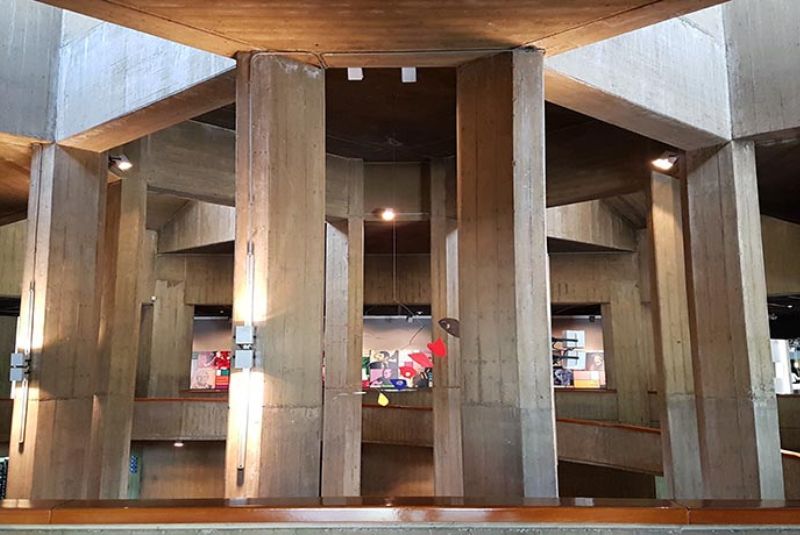
Bottom Line
The Tehran Museum of Contemporary Art stands as a cultural gem in the heart of Tehran. With its diverse collection and easy accessibility, it offers a captivating experience for art enthusiasts and curious visitors alike. The Museum provides a rich and immersive journey into the world of contemporary art. Whether you're a local resident or a tourist, the Tehran Museum of Contemporary Art is a must-visit destination that promises to inspire, educate, and delight all who enter its doors.
Share your story!
Comment below and let us know about your Experience.
Your story inspires others!


Comment
Leave a Comment